Storing food without a fridge may seem challenging, but it is entirely possible with the right techniques. For centuries, people have relied on traditional methods to preserve their food, ensuring its freshness and longevity without modern refrigeration.
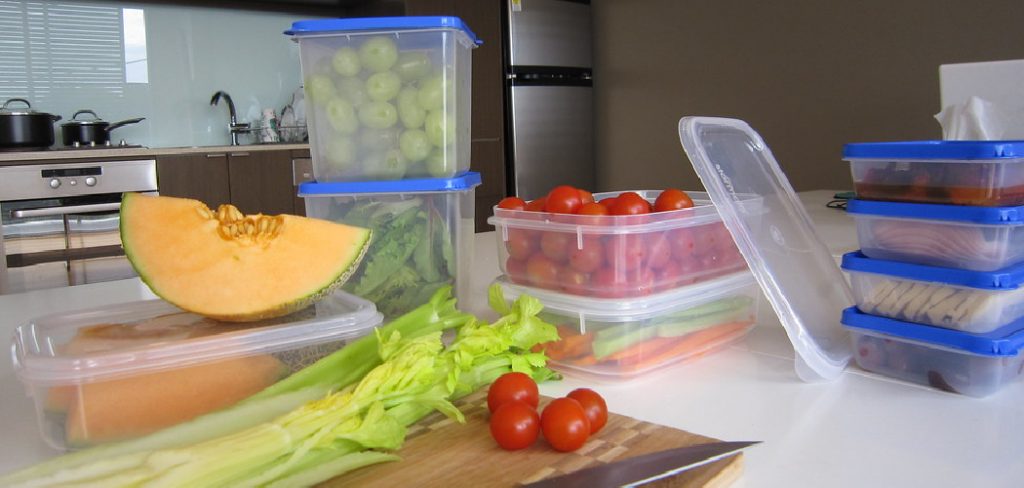
Whether you’re dealing with an unexpected power outage, living off-grid, or simply looking to reduce energy consumption, understanding these techniques can help you keep your food safe and minimize waste. This guide will explore various practical and time-tested methods for how to store food without fridge.
General Principles of Storing Food Without Refrigeration
Storing food without refrigeration requires attention to environmental factors such as temperature, humidity, and airflow. The key is to create conditions that slow down spoilage and maintain the quality of food. One essential principle is keeping food dry, as moisture can accelerate the growth of bacteria, mold, and yeast.
Proper ventilation is also crucial to prevent the buildup of heat and humidity, particularly for fresh produce.
Additionally, separating foods that release ethylene gas, like bananas and apples, from those sensitive to it can help extend shelf life. Another important practice is using airtight containers or wraps to protect food from pests and contamination. By following these general principles, you can effectively preserve a variety of foods without relying on a refrigerator.
Importance of Airtight Containers, Glass Jars, and Vacuum Sealing
Using proper storage methods is crucial when preserving food without refrigeration, and airtight containers, glass jars, and vacuum sealing play a vital role in this process. Airtight containers help protect food from exposure to air, which can lead to oxidation and spoilage. They also prevent the entry of pests, such as insects and rodents, ensuring the food remains safe and free from contamination.
Glass jars, especially those with tightly fitting lids, are excellent for storing dry goods like grains, spices, and nuts, as they are non-porous and do not retain odors or chemicals. Vacuum sealing removes air from the packaging, slowing down the growth of bacteria and mold, and is particularly effective for items like dried fruits, meats, and cheeses. By incorporating these tools, you can significantly extend the shelf life of various foods and maintain their freshness without the need for refrigeration.
Types of Food to Store Without Refrigeration
When storing food without a refrigerator, it is essential to focus on types of food that are naturally shelf-stable or can be preserved using traditional methods. Here are some common categories:
1. Grains and Legumes
Grains such as rice, wheat, oatmeal, and legumes like beans, lentils, and chickpeas are ideal for long-term storage. They can be kept in airtight containers or glass jars in a cool, dry place, protecting them from moisture and pests.
2. Dried Foods
Dried foods, including fruits (e.g., raisins, apricots), vegetables, and herbs, have a significantly extended shelf life due to their lack of moisture. They can be stored in vacuum-sealed bags or airtight containers to maintain their quality.
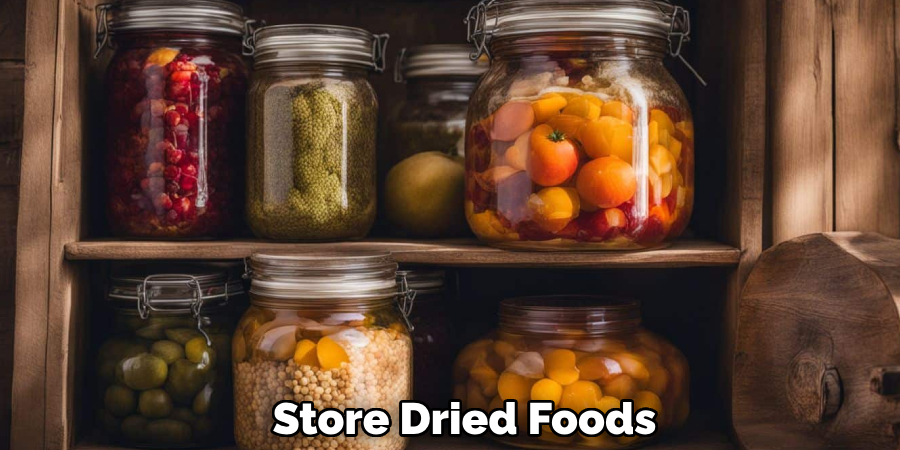
3. Root Vegetables
Root vegetables like potatoes, onions, garlic, and carrots can be stored in dark, cool, and well-ventilated spaces, such as a root cellar or pantry. Avoid placing them in plastic bags to prevent trapped moisture, which can lead to spoilage.
4. Nuts and Seeds
Nuts and seeds are nutrient-dense and can be stored for months without refrigeration. To keep them fresh and prevent rancidity, they should be stored in airtight containers in a cool, dry area.
5. Fermented Foods
Fermented foods such as pickles, sauerkraut, and kimchi can be stored without refrigeration for extended periods. The natural fermentation process creates an acidic environment that inhibits the growth of harmful bacteria.
6. Canned and Jarred Foods
Canned goods and preserved foods in jars, like canned beans, vegetables, or jams, are excellent options. These are already sealed to prevent contamination and have a long shelf life, making them perfect for non-refrigerated storage.
7. Dried Meats and Fish
Foods like jerky and dried fish can be stored in vacuum-sealed packaging or airtight containers. The drying process removes moisture, reducing the risk of bacterial growth and spoilage.
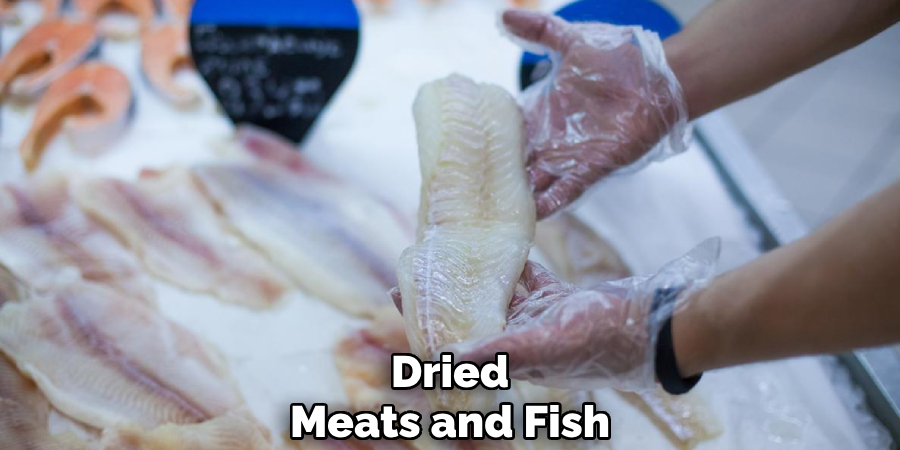
8. Baking Ingredients
Baking essentials like flour, sugar, salt, and baking soda have long shelf lives if stored properly in airtight containers. Keeping them away from humidity is crucial to prevent clumping and spoilage.
By selecting the right types of food and ensuring they are stored under optimal conditions, you can maintain a reliable, non-refrigerated food supply to support your needs.
10 Methods How to Store Food without Fridge
1. Root Cellaring for Long-Term Storage
A root cellar is a cool, dark, and humid underground storage area that helps keep fruits, vegetables, and some dairy products fresh. Root crops like potatoes, carrots, and beets thrive in a root cellar, as do apples and cabbages. The stable temperature and humidity prevent spoilage while extending the shelf life of perishable foods.
2. Drying to Preserve Fruits, Vegetables, and Meats
Drying is one of the oldest food preservation techniques. By removing moisture, bacteria and mold growth are minimized. Sun-drying, air-drying, and using a dehydrator are effective ways to store foods like herbs, fruits, vegetables, and meats. Properly dried food can last for months or even years if stored in airtight containers.
3. Salting to Extend Food Shelf Life
Salting is a traditional preservation method that works by drawing moisture out of food, preventing bacterial growth. Meats like fish, beef, and pork can be salted and then dried or stored in a cool, dry place. Salted foods should be rinsed before consumption to remove excess salt and improve flavor.
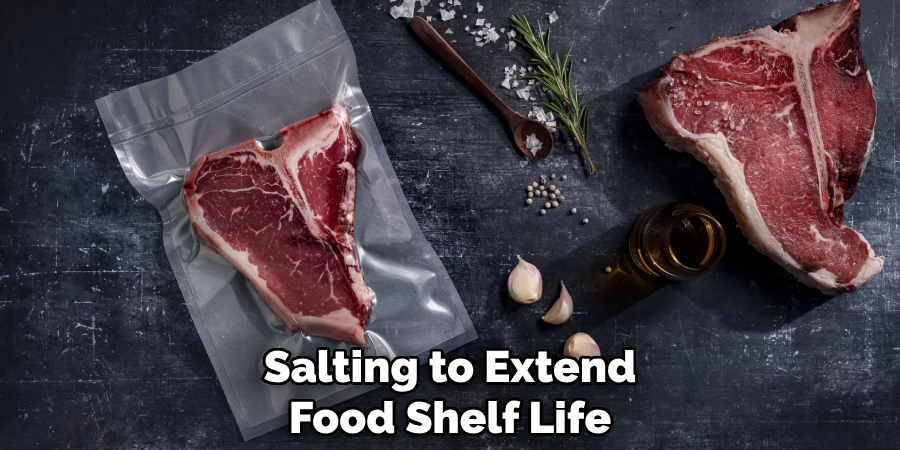
4. Fermenting for Long-Lasting Probiotics
Fermentation not only preserves food but also enhances its nutritional value by creating beneficial probiotics. Vegetables like cabbage (sauerkraut), cucumbers (pickles), and dairy (yogurt and cheese) can be fermented and stored for months without refrigeration. Fermented foods should be kept in airtight containers in a cool, dark place to maintain freshness.
5. Canning to Lock in Freshness
Canning involves sealing food in jars and heating them to kill bacteria and prevent spoilage. Water bath canning is suitable for acidic foods like tomatoes and jams, while pressure canning is necessary for low-acid foods like meats and vegetables. Properly canned food can last for years without refrigeration.
6. Using Oil Preservation for Dairy and Vegetables
Oil acts as a natural barrier against air and bacteria, making it an effective preservation method. Soft cheeses, herbs, and vegetables can be submerged in olive or vegetable oil to keep them fresh. This method is commonly used for storing sun-dried tomatoes, roasted peppers, and marinated cheese.
7. Burying Food to Keep It Cool
Burying food underground is a natural way to maintain a low temperature, especially in hot climates. This method works best for root vegetables, eggs, and even butter. Digging a hole and covering the food with soil or sand helps insulate it from temperature fluctuations, keeping it cool and fresh.
8. Smoking Meats for Extended Shelf Life
Smoking not only imparts a delicious flavor to meats but also preserves them by reducing moisture and adding antimicrobial properties. Smoked fish, beef, and pork can last for weeks or even months when stored properly in a dry, cool place. This method is particularly useful for long-term food storage without refrigeration.
9. Keeping Dairy Fresh with Evaporative Cooling
Evaporative cooling, or the “pot-in-pot” method, is an effective way to store perishable foods like milk, cheese, and butter in hot climates. This involves placing a smaller clay pot inside a larger one filled with wet sand. As the water evaporates, it cools the inner pot, keeping food fresh longer.
10. Utilizing Honey as a Natural Preservative
Honey is a powerful natural preservative due to its antibacterial properties. Fruits, nuts, and even some meats can be preserved in honey for extended periods. Honey not only prevents spoilage but also enhances flavor, making it an excellent alternative to refrigeration.
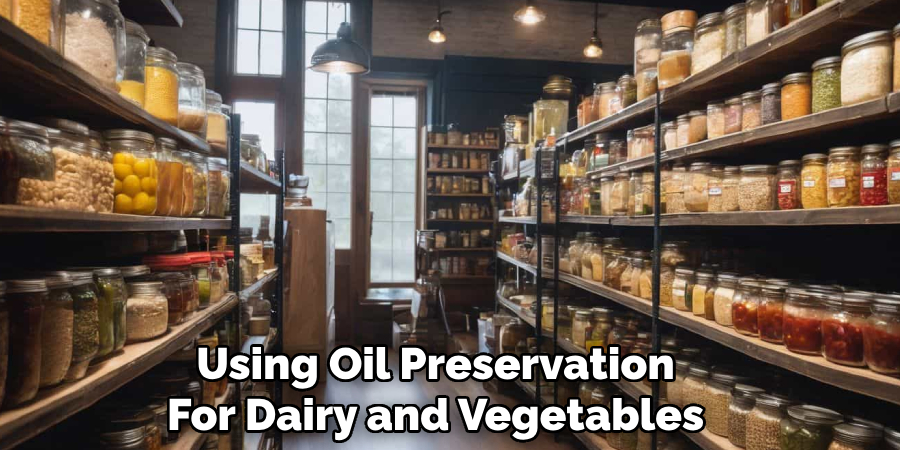
Safety Considerations
When storing and preserving food without refrigeration, it is essential to follow key safety guidelines to prevent spoilage and minimize the risk of foodborne illnesses. First, always ensure that containers, jars, and storage areas are clean and sanitized to avoid contamination.
For methods like canning, it is critical to use the appropriate technique—such as pressure canning for low-acid foods—to eliminate harmful bacteria like Clostridium botulinum. Regularly inspect stored foods for signs of spoilage, such as off smells, discoloration, or mold, and discard any questionable items immediately.
Labeling preserved foods with dates ensures that older items are consumed first, reducing waste and the likelihood of consuming spoiled products. Additionally, store food in cool, dry, and dark places to maintain optimal conditions and extend shelf life. By adhering to these safety practices, you can confidently make use of non-refrigerated food storage methods.
Conclusion
Storing food without refrigeration requires knowledge and careful planning, but it is entirely possible with the right methods. Techniques such as drying, salting, fermenting, and canning ensure food remains safe and nutritious for extended periods. So, there you have it – a quick and easy guide on how to store food without fridge.
Professional Focus
Angela Ervin, a former interior designer turned blogger, specializes in kitchen design and renovations. Through her website, she blends her passion for cooking with design expertise, sharing practical and creative ideas. Known for balancing functionality and beauty, Angela’s insightful content has made her a trusted voice in home design and lifestyle.
About the Author
Angela Ervin, an experienced interior designer and blogger, combines her passion for kitchen renovations with storytelling. Living in Petersburg with her family, she enjoys cooking and testing her projects firsthand. Known for her humor and relatable style, Angela shares creative, functional design insights through her content, making her a trusted voice in home design.
Education History
University: Virginia Commonwealth University
Degree: Bachelor of Fine Arts (BFA) in Interior Design
- Angela’s education at VCU focused on mastering core interior design principles, including spatial planning, color theory, materials selection, and sustainable design practices.
- She gained hands-on experience through studio projects and collaborative design exercises, which honed her ability to create functional and aesthetically pleasing environments.
- Her coursework also emphasized problem-solving and practical applications of design, preparing her for real-world projects like her self-directed kitchen renovations.
- The program’s strong foundation in both technical skills and creative expression shaped Angela’s ability to seamlessly integrate form and function in her work.


